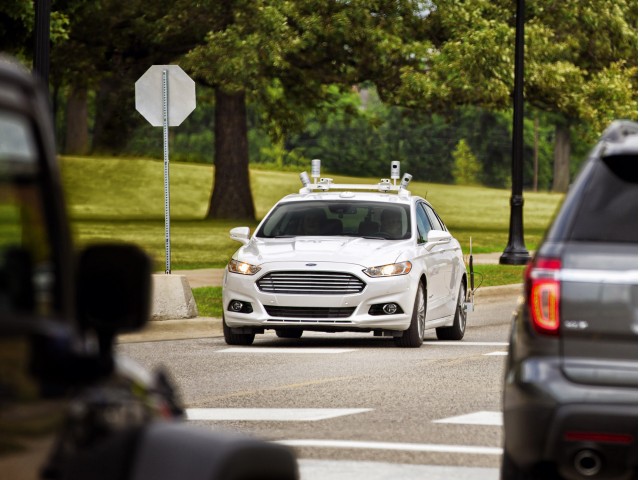-
Tips for becoming a good boxer - November 6, 2020
-
7 expert tips for making your hens night a memorable one - November 6, 2020
-
5 reasons to host your Christmas party on a cruise boat - November 6, 2020
-
What to do when you’re charged with a crime - November 6, 2020
-
Should you get one or multiple dogs? Here’s all you need to know - November 3, 2020
-
A Guide: How to Build Your Very Own Magic Mirror - February 14, 2019
-
Our Top Inspirational Baseball Stars - November 24, 2018
-
Five Tech Tools That Will Help You Turn Your Blog into a Business - November 24, 2018
-
How to Indulge on Vacation without Expanding Your Waist - November 9, 2018
-
5 Strategies for Businesses to Appeal to Today’s Increasingly Mobile-Crazed Customers - November 9, 2018
Ford Promises Self-Driving Taxis With No Steering Wheels By 2021
This first model will be used for Uber and other ride-sharing services to start feeling out the implementation of the cars into the general market. In a video announcement about the company’s plans, Ford President and CEO Mark Fields said these will not be standard auto designs with autonomous technology added on.
Advertisement
Instead, Ford is taking the same approach as Alphabet Inc.’s Google, which supports moving directly to self-driving cars once the technology is perfected.
Our guess would be that Velodyne is also working on its own next-generation lidar system that may be entirely solid state, but we’d also guess that the sensors that Ford and Baidu are looking forward to will be a mass producible, relatively low cost version of Velodyne’s existing VLP-16 “Puck”.
Nair says Ford will continue developing systems that assist the driver, like automatic emergency braking or lane departure warning. “A driver is not going to be required”. Engineers couldn’t figure out how to make sure drivers stay engaged and ready to take over.
“Where we see the greatest opportunity is where we’re able to remove the driver from responsibility for driving altogether”, Nair said. Ford CEO Mark Fields said that these vehicles were specially designed for ride-sharing and would improve safety and solve environmental challenges for millions of people.
This year, Ford says it will triple its autonomous vehicle test fleet, bringing the number to about 30 self-driving Fusion Hybrid sedans on the roads in California, Arizona and MI.
Jefferies analyst Philippe Houchois believes Ford’s decision to plant a foot in autonomous ride-hailing is an “interesting initiative to position Ford in what is likely to become a new volume segment”.
GM has spent nearly $600 million – and will spend more – acquiring self-driving software maker Cruise Automation and invested $500 million for a 9 percent stake in ride-hailing company Lyft Inc.
The company also says it plans to double the staff at its Palo Alto research center by the end of next year to almost 300 people.
Ford announced its plan to have fully autonomous vehicles on the roads by 2021. Companies like Ford and Baidu see lidar as an integral sensor on their near-future autonomous vehicle projects, and to support that vision, they’ve just invested United States $150 million in Velodyne, the company that makes the best lidar sensors on the planet.
The automaker also announced investments in three other companies involved in major technologies for driverless vehicles.
In addition, Ford has acquired an Israel-based company called SAIPS that helps vehicles learn and adapt to their surroundings, and reached an exclusive licensing agreement with a “machine vision” company called Nirenberg Neuroscience.
Advertisement
Civil Maps: Ford has invested in Berkeley, California-based Civil Maps to further develop high-resolution 3D mapping capabilities.





























